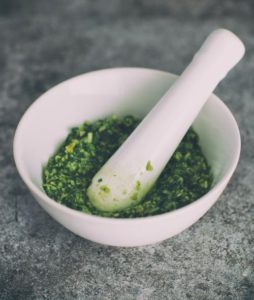
I am amazed how friends have managed to get tasks done during this pandemic isolation.
The Fitzgerald’s garden looks like something out of a French painting with pots of herbs on the fence, homemade cushions with seating for friends and two gorgeous cocker spaniels lazing on my legs, adding to the ambience.
The Robertson’s grass look like a golf course and their bird-feeders have hovering mammas feeding fledglings.
Even my condos are so full of perennials they are about to spill onto the sidewalks.
I seem to do less house-cleaning and more reading, cooking and watching television. The house is clean (the kitchen always pristine), but the clutter gets to me. I do put the bills where they need to be, so I can pay them, and I get rid of junk mail quickly and take it — plus the newspapers — to the dumpster, but the magazines I put in neat piles and sometimes forget to read them.
Such was the case with the May/June issue of Yankee, which probably arrived in April. I love Yankee, especially its columnists. I have known Amy Traverso, its senior food editor, for a long time and her articles and recipes are really good.
In that issue, she writes about The Blue Oar in Haddam, Conn., on our part of the shoreline. And in another, she has a recipe for strawberry shortcake, with the shortcake made with pistachios. Obviously, local strawberries are gone but I will use the shortcake recipe with pistachios — it uses heavy cream instead of butter, making the recipe easier to make.
Another piece is about Krista Kern Desjarlais and her two restaurants in Maine. You may remember her from her restaurant in Westerly called Three Fish. Decades ago, she was serving pastries that were not only delicious but picture-perfect. I wrote about her then and have followed her ever since. I ate at her Portland, Maine, tiny restaurant, Bresca, a few times and loved everything about it.
In the magazine, she included a recipe for Pistachio Pesto. I make basil pesto every summer, package about two big tablespoons in plastic snack sizes, freeze the packages separated by paper towels and the little ones into a bigger plastic bag. (The paper towels allow you to separate the snack packs one at a time. You can warm the packets in your hands and they are warm by the time your pasta has boiled and drained.)
To make pesto, use any herb for the sauce. And if you are out of pine nuts (pretty expensive and difficult to find), use walnuts. The flavor will be different but still tasty. Krista suggests pistachios. I never thought of that.
Use the recipe below and, this summer, choose almost any herb you have and any nuts available. In addition to cooking pasta with pesto, use it in marinara or most other red sauce or in stew this winter, especially if you make pesto out of parsley.
Krista also uses a tablespoon each of lemon zest and lemon juice and a little shallot. All this sounds delicious, doesn’t it?

Pesto alla Genovese
(from 365 Ways to Cook Pasta by Marie Simmons, Harper Collins, New York, 1988)
I triple or quadruple (or more) and freeze pesto in small zipper plastic bags. The pesto will last for more than a year and will thaw in minutes.
Yield: 1 cup or enough for 1 pound of pasta
2 cups packed fresh basil leaves
1/3 cup pignoli (pine nuts)
1 large garlic clove, chopped
¼ teaspoon salt
½ cup extra-virgin olive oil
1/3 cup freshly grated Parmesan cheese
Finely chop basil, nuts, garlic and salt in a food processor. With processor still running, add oil in a slow, steady stream through the feed tube until mixture is thoroughly blended. Transfer to a bowl and fold in the cheese.
Freeze in tiny freezer bags. When ready to use, you can thaw the pesto in freezer bag between your hands.
About the author: Lee White has been writing about restaurants and cooking since 1976 and has been extensively published in the Worcester (Mass.) Magazine, The Day, Norwich Bulletin, and Hartford Courant. She currently writes Nibbles and a cooking column called A La Carte for LymeLine.com and also for the Shore Publishing and Times newspapers, both of which are owned by The Day.